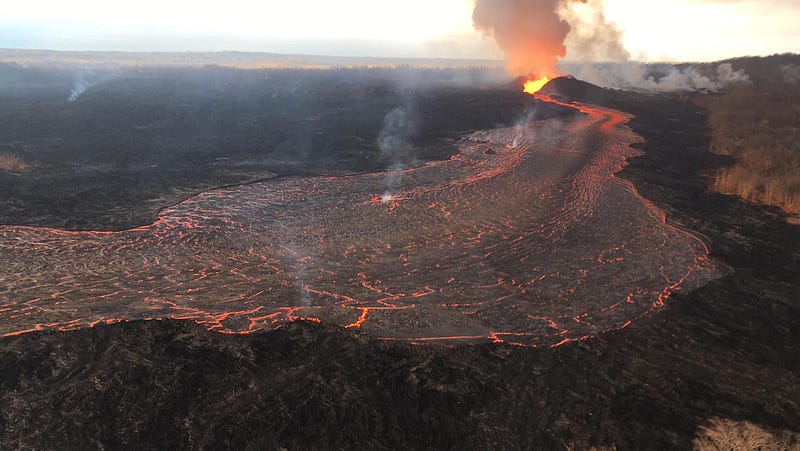Ancient Climate Rebounds After Massive Eruptions
Written on
Chapter 1: Understanding the Columbia River Basalt Group
The Columbia River Basalt Group is a significant geological formation in the Pacific Northwest of the United States, primarily consisting of extensive basaltic flood rock. This formation covers a vast area of Washington and Oregon, akin to the ongoing eruption of Kīlauea but occurring over millions of years instead of decades. To visualize, imagine a prolonged volcanic event, interspersed with large explosive eruptions, similar to the recent Hunga Tonga-Hunga Ha’apai eruption, but lasting far longer.
This phenomenon resulted in the deposition of approximately 210,000 square kilometers of basalt and released around 300 gigatons of sulfur dioxide—a potent greenhouse gas. While carbon dioxide was also emitted, analyses reveal that its concentration was insufficient to trigger the substantial climate changes noted in the geological record.

Section 1.1: The Impact of Sulfur Dioxide
Recent research published in Geophysical Research Letters aimed to assess the influence of sulfur dioxide on global climate. The findings, while based on computer simulations covering a brief eruption period of four years and a subsequent sixteen-year climate analysis, indicated significant temperature changes.
During this period, average global temperatures fell by 2 to 3 degrees Celsius, with the Northern Hemisphere experiencing summer temperature drops of 30 degrees Celsius and winter increases of 15 degrees Celsius. The sulfur dioxide emissions formed an atmospheric barrier that blocked solar heat and temporarily disrupted the tropopause, leading to the depletion of the ozone layer.
Subsection 1.1.1: Climate Recovery
Despite these dramatic shifts, the research highlighted a silver lining: the climate showed remarkable resilience. After sixteen years, temperatures normalized, humidity levels stabilized, and the ozone layer began to recover. This rapid rebound challenges the notion that volcanic eruptions inevitably lead to long-lasting climate crises.
Chapter 2: The Broader Implications
However, it is important to note that while the climate may eventually recover, the associated volcanic activity has been linked to two significant extinction events in Earth's history. Lead author Scott Guzewich emphasized that even significant climatic disruptions can be followed by a swift return to equilibrium, suggesting a level of resilience in Earth's climate system.
The first video, Mass Extinctions and Ancient Climate Catastrophes, explores how historical volcanic activities have influenced Earth's climate and biodiversity.
The second video, Volcanoes, Climate and Mass Extinction in Earth History, delves into the relationship between volcanic eruptions and significant extinction events throughout geological time.
In conclusion, while the findings provide a glimmer of hope regarding climate resilience, they also serve as a reminder of the potential risks associated with prolonged volcanic activity. The balance between recovery and devastation remains delicate, urging further exploration into our planet's climatic history and its implications for the future.